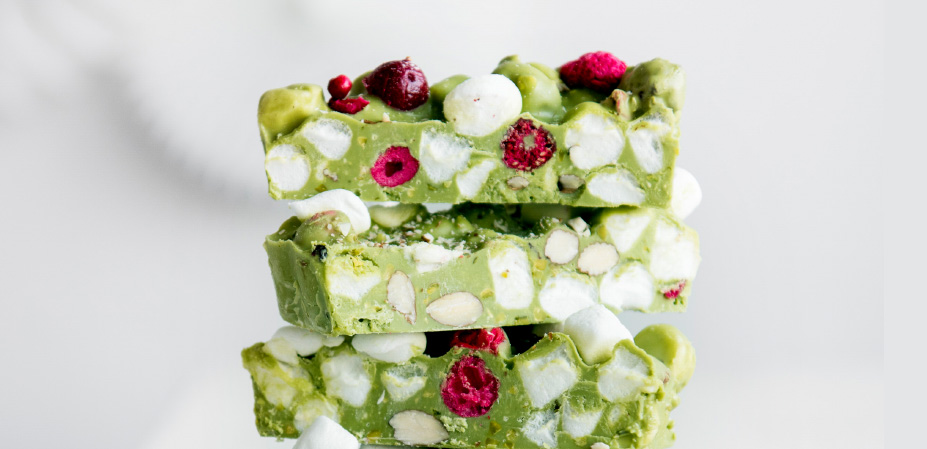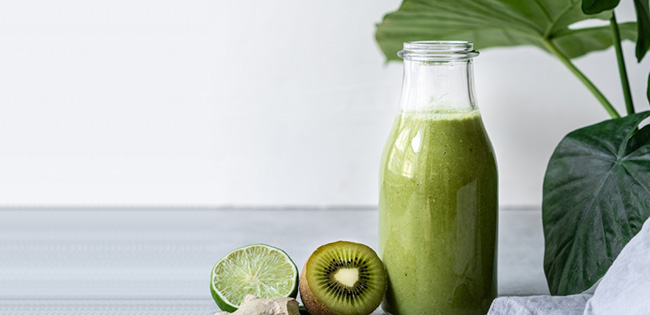WAYS TO USE MATCHA
Because Matcha is a kind of tea that is traditionally ground into a fine powder, it can be used in a wide variety of ways, producing incredible results in terms of flavour, colour and popularity. Products like ice-cream, chocolate, milk/yoghurt-based drinks are particularly popular, as are the extensive uses for matcha in the catering industry, from matcha cappuccinos to matcha smoothies.
Our matcha meets all the necessary requirements for use in foods. Find out more about the safety of our products here.
MATCHA CHOCOLATE
Dosage white chocolate: 1 – 2%
Dosage milk chocolate: 2 -3%
Dosage dark chocolate: at least 5%
The most popular use of Matcha in chocolate is based on white chocolate. In this combination, color and taste of Matcha unfold their full potential. The result is a great green color with excellent taste. For milk chocolate, the combination of Matcha with other ingredients is in the foreground. When combined with dark chocolate, the delicate taste of Matcha tea is usually masked therefore the Matcha content needs to be adjusted with a higher percentage. Therefore, this combination is more suitable for its effect, since darker chocolates as well as Matcha contain a high amount of antioxidants.


MATCHA CONFECTIONARY
Dosage: 0.8 – 2.5%
Base: vanilla base with low fat. Result: Creamy, pleasantly light-tasting ice cream, sweet and mild green tea flavor.
MATCHA BEVERAGES
Dosage: 0.6 – 1.2%
Milk / yogurt-based drinks
Base: milk, yoghurt, soy milk, other milk alternatives
Result: High-quality milk / yoghurt mixed drink, slightly green color, a pleasantly mild and light green tea flavor, also in combination with other flavors.
Dosage: Two grams of Matcha are enough for a 500 ml drink.


ICE TEA & SMOOTHIES
Base: water, fruit juice
Result: Fantastic, natural green and a pleasant Matcha aroma. Theine and L-theanine provide an energy boost that lasts 3-6 hours without the unpleasant side effects of coffee, such as the well-known “caffeine hole”.

